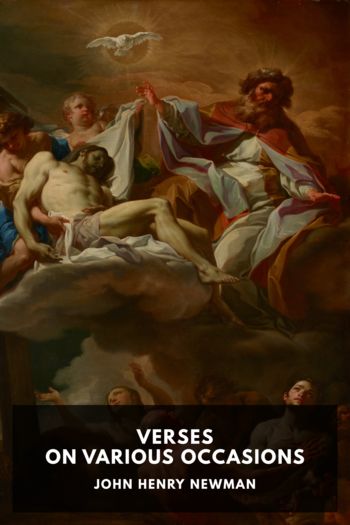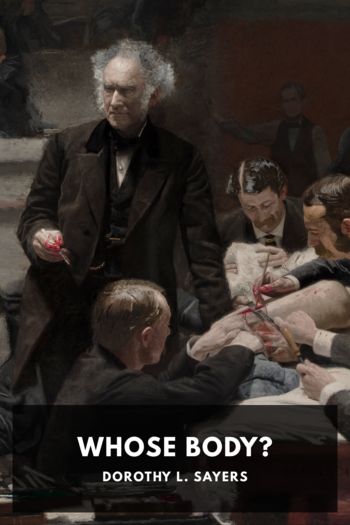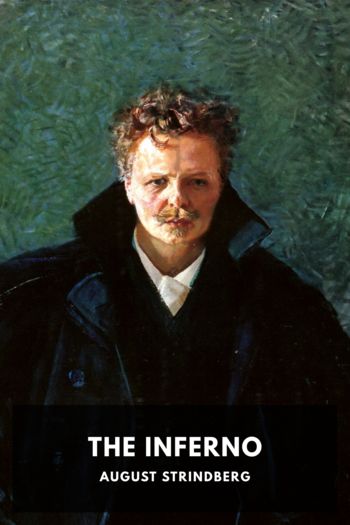The Divine Comedy Dante Alighieri (best smutty novels .txt) 📖

- Author: Dante Alighieri
Book online «The Divine Comedy Dante Alighieri (best smutty novels .txt) 📖». Author Dante Alighieri
↩
Lapo is the abbreviation of Jacopo, and Bindi of Aldobrandi, both familiar names in Florence. ↩
Milton, “Lycidas,” 113:—
“How well could I have spared for thee, young swain,
Enow of such as for their bellies sake
Creep, and intrude, and climb into the fold!
Of other care they little reckoning make,
Than how to scramble at the shearers feast,
And shove away the worthy bidden guest!
Blind mouths! that scarce themselves know how to hold
A sheep-hook, or have learned aught else the least
That to the faithful herdman’s art belongs!
What recks it them? What need they? They are sped;
And, when they list, their lean and flashy songs
Grate on their scrannel pipes of wretched straw:
The hungry sheep look up, and are not fed;
But swoln with wind, and the rank mist they draw,
Rot inwardly, and foul contagion spread:
Besides what the grim wolf with privy paw
Daily devours apace, and nothing said:
But that two-handed engine at the door
Stands ready to smite once, and smite no more.”
↩
Cowper, “Task,” II:—
“He that negotiates between God and man,
As God’s ambassador, the grand concerns
Of judgment and of mercy, should beware
Of lightness in his speech. ’Tis pitiful
To court a grin, when you should woo a soul;
To break a jest, when pity would inspire
Pathetic exhortation; and t’ address
The skittish fancy with facetious tales,
When sent with God’s commission to the heart!”
For a specimen of the style of popular preachers in the Middle Ages, see the story of Frate Cipolla, in the Decameron, Gior. VI Nov. 10. See also Scheible’s Kloster, and Menin’s Predicatoriana. ↩
The Devil, who is often represented in early Christian art under the shape of a coal-black bird. See Didron, Christian Iconography, I. ↩
In early paintings the swine is the symbol of St. Anthony, as the cherub is of St. Matthew, the lion of St. Mark, and the eagle of St. John. There is an old tradition that St. Anthony was once a swineherd. Brand, Pop. Antiquities, I 358, says:—
“In the World of Wonders is the following translation of an epigram:—
‘Once fed’st thou, Anthony, an heard of swine,
And now an heard of monkes thou feedest still:—
For wit and gut, alike both charges bin:
Both loven filth alike; both like to fill
Their greedy paunch alike. Nor was that kind
More beastly, sottish, swinish than this last.
All else agrees: one fault I onely find,
Thou feedest not thy monkes with oken mast.’
“The author mentions before, persons ‘who runne up and downe the country, crying, Have you anything to bestow upon my lord S. Anthonie’s swine?’ ”
Mrs. Jameson, Sacred and Legendary Art, II 380, remarks:—
“I have read somewhere that the hog is given to St. Anthony, because he had been a swineherd, and cured the diseases of swine. This is quite a mistake. The hog was the representative of the demon of sensuality and gluttony, which Anthony is supposed to have vanquished by the exercises of piety and by divine aid. The ancient custom of placing in all his effigies a black pig at his feet, or under his feet, gave rise to the super stition that this unclean animal was especially dedicated to him, and under his protection. The monks of the Order of St. Anthony kept herds of consecrated pigs, which were allowed to feed at the public charge, and which it was a profanation to steal or kill: hence the proverb about the fatness of a ‘Tantony pig.’ ”
Halliwell, Dict. of Arch. and Prov. Words, has the following definition:—
“Anthony-Pig. The favorite or smallest pig of the litter. A Kentish expression, according to Grose. ‘To follow like a tantony pig,’ i.e. to follow close at one’s heels. Some derive this saying from a privilege enjoyed by the friars of certain convents in England and France, sons of St. Anthony, whose swine were permitted to feed in the streets. These swine would follow any one having greens or other provisions, till they obtained some of them; and it was in those days considered an act of charity and religion to feed them. St. Anthony was invoked for the pig.”
Mr. Howells, Venetian Life, p. 341, alludes to the same custom as once prevalent in Italy:—
“Among other privileges of the Church, abolished in Ven ice long ago, was that ancient right of the monks of St. Anthony Abbot, by which their herds of swine were made free of the whole city. These animals, enveloped in an odor of sanctity, wandered here and there, and were piously fed by devout people, until the year 1409, when, being found dangerous to children, and inconvenient to everybody, they were made the subject of a special decree, which deprived them of their freedom of movement. The Republic was always opposing and limiting the privileges of the Church!”
↩
Giving false indulgences, without the true stamp upon them, in return for the alms received. ↩
The nature of the Angels. ↩
Daniel 7:10:—
“Thousand thousands ministered unto him, and ten thousand times ten thousand stood before him.”
↩
That irradiates this angelic nature. ↩
The splendors are the reflected lights, or the Angels. ↩
The fervor of the Angels is proportioned to their capacity of receiving the divine light. ↩
The ascent to the Empyrean, the tenth and last Heaven. Of this Heaven, Dante, Convito, II 4, says:—
“This is the sovereign edifice of the world, in which the whole world is included, and outside of which nothing is. And it





Comments (0)